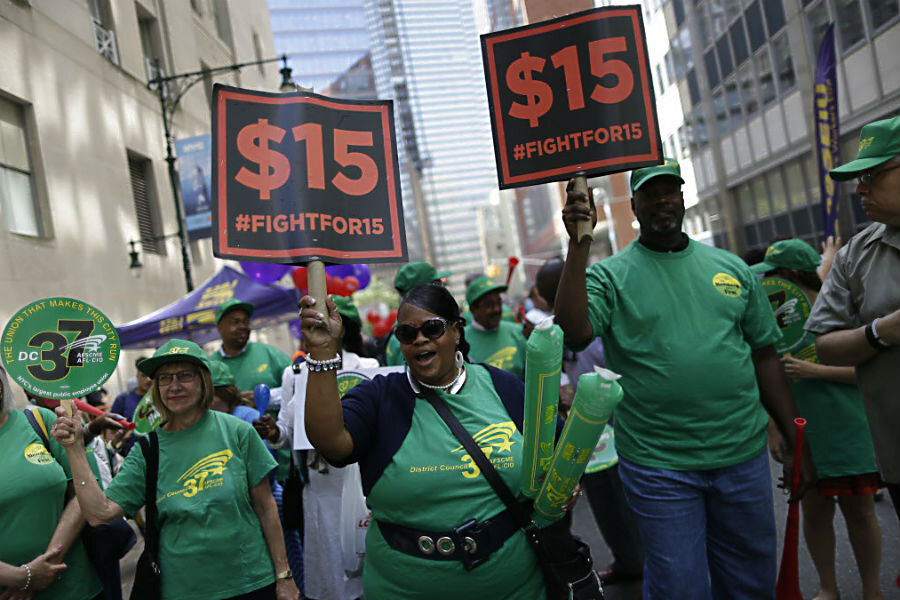How can cities successfully enforce a higher minimum wage?
Loading...
The recent wave of minimum wage hikes across the country has drawn mixed reactions, to say the least: triumphant cheers from minimum wage workers and activists; angry opposition from employers who say that businesses will be forced to fire workers or else struggle to stay open.
But for the millions of employees who are paid below the legal minimum, the raises aren’t likely to have much of an impact.
According to Bureau of Labor Statistics, roughly 1.7 million U.S. workers — two thirds of whom were women — were illegally paid less than the federal minimum of $7.25 per hour in 2014. Many are undocumented; others simply take the jobs because they’re the only ones they can get.
The US Labor Department investigates these violations, but doesn’t enforce state and local wage laws, leaving cities and states across the country responsible for making sure their $10 or $15 minimum wages are enforced.
Tia Koonse, a researcher at the UCLA Labor Center, says that an increase in legal wages and a decrease in regulation is likely to cause many businesses who previously complied with the laws to start underpaying their employees.
"If there is not a credible threat of a compliance check, then what happens?" Koonse said to the Associated Press.
Many employers in cities with large pools of low-wage workers, such as New York and Los Angeles, believe that they cannot compete with other businesses if they pay the legal wage, says Janice Fine, a professor at Rutgers University who has studied the low-wage work force — and they’re right.
“It’s just true that we will never have enough inspectors to be everywhere,” Ms. Fine said to The New York Times. “To make any of these policies more than aspirational, we have to be thinking about new enforcement strategies.”
In San Francisco, where the wage will increase to $15 by 2018, the city created its own labor standards enforcement division with more than two dozen investigators. The Los Angeles City Council has faced pressure to create a similar department but has yet to do so, relying thus far on a handful of investigators and a large web of community-based organizations.
Some cities are focusing on making workers aware of the raises they’re supposed to be getting. In Seattle, labor union officials and other activists pinned fliers up in public places telling workers to expect higher pay when the first phase of the city's wage increase was implemented in April.
However, as Donna Levitt, head of the San Francisco division, points out, ”there are a lot of reasons that people are fearful of coming forward and asserting their rights, even if they know the minimum wage has increased.”
States have the resources to create larger labor departments than individual cities, but some may need to rethink their enforcement strategies. The New York Labor Department, which is the second largest after California with 112 investigators, was described as “inadequate” and “untimely” in an an official audit from the New York State Comptroller’s Office last year after it was discovered that the agency had a backlog of more than 17,000 cases, and 75 percent of them had been open more than a year.
As more attention is drawn to the minimum wage debate, state officials are starting to take action toward stricter enforcement. The California State Senate passed legislation earlier this month that will give state officials more power to collect back pay by forcing employers to put up a bond to pay the employee the wages he’s owed.
But it will take more than one piece of legislation to make a significant dent in the practice of wage theft, says Victor Narro, the project director of the U.C.L.A. Labor Center.
“We’ve had an existing wage theft crisis for a while, and if we don’t address that the increase is just an empty promise and unfulfilled dream,” Mr. Narro told the Times. “We have been pressing for this for years and we are starting to get somewhere, but this is only the beginning.”








